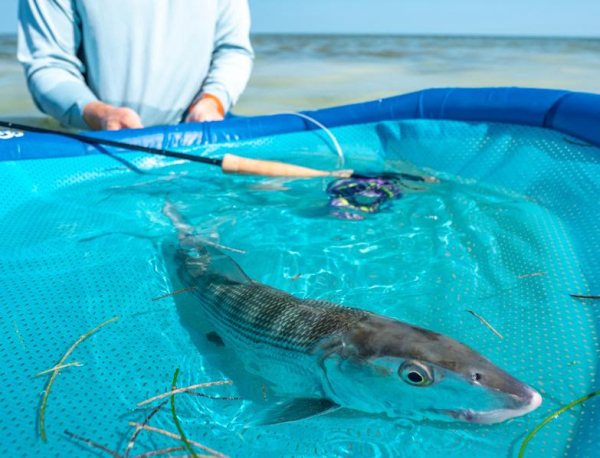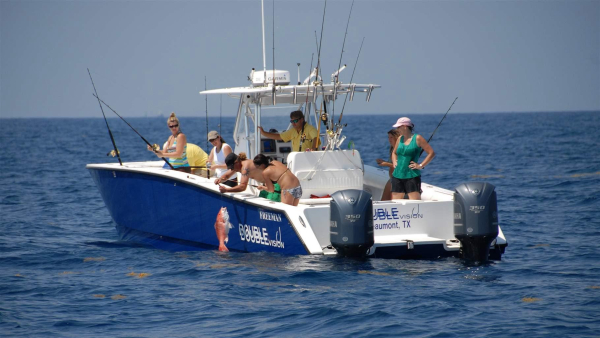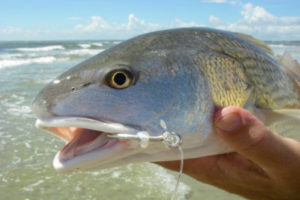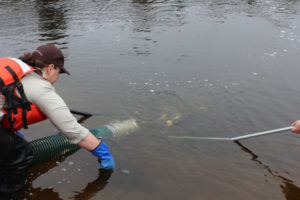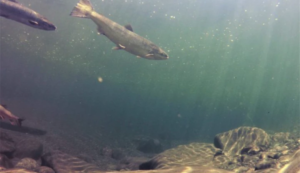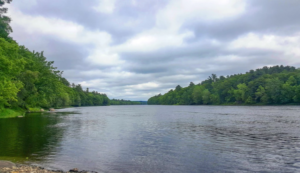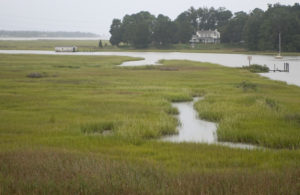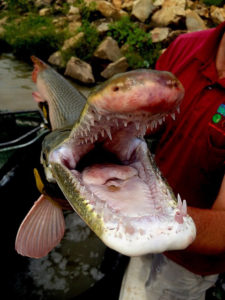Bonefish Tagging in the Florida Keys with Bonefish & Tarpon Trust |
| By Nick Roberts, BTT from The Fishing Wire A subtle, V-shaped wake appeared on a sun-drenched flat near Big Pine Key. As it approached the skiff, poled by Dr. Ross Boucek, Bonefish & Tarpon Trust’s Florida Keys Initiative Manager, its source was revealed: a pair of bonefish foraging on crustaceans hiding in the sand and seagrass. When the ghostly silhouettes came within range, I cast a couple feet ahead of them. One of the fish tracked the spawning shrimp fly and suddenly pounced. I set the hook and the gray blur tore across the flat, peeling line from my reel as it headed for deeper water. Within seconds, I was down to my backing. The pressure to land the bonefish was much greater than usual; a pulled hook would mean losing not only a prized catch, but the opportunity for Dr. Boucek to tag the fish and collect important tracking data.Anglers from around the world have pursued bonefish in the Florida Keys, the birthplace of saltwater fly-fishing, since the 1940s and ‘50s, when legends like Joe Brooks and Ted Williams pioneered the sport in the now hallowed waters of Islamorada and Florida Bay. In the sport’s early years and through its glory days of the 1960s to the mid-1980s, the Keys’ bonefish population seemed as boundless as the pristine flats and mangrove shorelines the fish inhabited. But in the late ‘80s, the population began to decline, prompting a group of concerned anglers to found Bonefish & Tarpon Trust (BTT), a science-based nonprofit organization, in 1998. Not only did BTT seek to determine the causes of the decline, it endeavored to fill in critical knowledge gaps; at that time, only a handful of research studies on bonefish existed, leaving many basic questions to be answered. Since its founding, BTT has directed research on the life cycle of bonefish, their habitat use, movement patterns, and spawning behavior, and worked with the state of Florida to protect the species under catch-and-release regulations. BTT has also uncovered a number of causes of the decline, including: reduced water quality throughout the Everglades, Florida Bay, and the Florida Keys; habitat destruction (the number of Keys flats classified as “severely degraded” due to propeller scarring has increased 90% in the last 20 years); poor fish handling practices; and diminished numbers of bonefish larvae coming from spawning at “upstream” locations, such as Belize, Mexico, and southwest Cuba. Reduced spawning and reproduction within the severely reduced Keys’ bonefish population has also played a major role in the decline, and the record cold snap in January 2010 likely killed a substantial number of fish. Dr. Boucek and Nick in search of bonefish in the Lower Keys.Yet there is good reason to be hopeful. Over the past few years, the population has begun to rebound, with guides and anglers reporting increasing numbers of sightings and catches.”There are a lot of bonefish around in three different sizes, all born a year apart from one another,” said Dr. Boucek. “Starting in 2014, a new wave of babies came in, followed by two more new generations in 2015 and 2016. The size classes are approximately 15 to 18 inches (2016 fish), 18 to 20 inches (2015 fish), and 22 to 25 inches (2014 fish). ”Although these new fish are encouraging, we don’t know where they came from, why they are doing so well after years of decline, or if more new fish will continue to enter the Keys population. So it is still critically important that we understand and address the causes of the historic decline, to ensure that a similar downturn does not occur in the future.“The Keys went about 20 years without a good new generation of bonefish coming into the population,” said Dr. Boucek. “That’s a sign of stress on the habitats and the fishery. When habitat gets degraded, fish reproduction is impacted, juvenile fish struggle to survive, and adults don’t grow as fast. And new generations of fish become fewer and farther between. ”Dr. Ross Boucek poles a flat.Among the most important habitats to protect are bonefish spawning sites. If bonefish cannot reproduce successfully, there will be no fishery. From its work in the Bahamas, BTT knows how bonefish reproduce. During full and new moon cycles from fall through early spring, fish from as far away as 70 miles instinctively gather at nearshore sites, where they prepare to spawn by porpoising at the surface and gulping air to fill their swim bladders. At night, they go offshore and dive hundreds of feet before surging back up to the surface. The sudden change in pressure makes their swim bladders expand, causing them to release their eggs and sperm. After fertilization takes places, the hatched larvae drift in the ocean’s currents for over a month before settling in shallow sand- or mud-bottom bays, where they develop into juvenile bonefish.With the help of guides and partners, BTT has identified spawning sites in the Bahamas and along the Belize-Mexico border, yet the locations of the spawning sites in the Florida Keys remain a mystery, one that must be solved if we are to ensure the future health of the Keys’ bonefish fishery and help it reclaim its former glory.“There are a couple possible reasons that might explain the lack of known spawning sites in the Keys,” said Dr. Boucek. “First, nobody knew what bonefish spawning sites looked like until we discovered one in the Bahamas in 2011. Maybe by then the size of the spawning school in the Keys had shrunk to the point that it wasn’t noticeable to us. Or maybe the size of the Keys population became so small that the fish completely stopped spawning for a period of time. Fish won’t spawn if there aren’t a critical number of spawning fish.”Over the past couple years, several Keys guides have reported seeing schools of bonefish in nearshore waters. Now, Dr. Boucek is counting on the fish he tags to lead him to their spawning sites.As soon as I land the bonefish, Dr. Boucek places it in a submerged inflatable pen. While I hold the fish upside down in the water to keep it calm, he makes an incision in its abdomen. Right away, he notices that the fish is female—ovaries are evident and filled with developing eggs. He inserts a small acoustic transmitter into the abdominal cavity and skillfully stiches the incision closed. The transmitter emits an ultrasonic ping with a unique ID code every couple of minutes. Whenever this tagged bonefish swims past one of the several thousand acoustic receivers, belonging to BTT and other research groups, moored to the ocean floor throughout the Keys, the receiver records the date and time of the transmitter’s ping. The tracking data will allow Dr. Boucek to chart the fish’s habitat use and, hopefully, locate its spawning site this winter.With the Nick’s assistance, Dr. Boucek (right) tags a bonefish with an acoustic transmitter.An acoustic transmitter.I release the bonefish and we watch as it glides away across the flat and vanishes into the glare.Dr. Boucek (left) and Nick celebrate the successful tagging of a Florida Keys bonefish. Nick Roberts is the Director of Marketing & Communications at Bonefish & Tarpon Trust (www.BTT.org) and the editor of the Bonefish & Tarpon Journal. All photos by: Ian Wilson Learn more about the work of Bonefish & Tarpon Trust at www.bonefishtarpontrust.org. |
